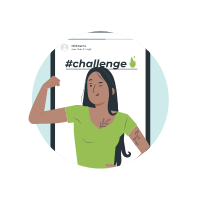Social Media Marketing: The Complete Guide
Everything You Need to Get Started With Social Media Marketing
Social media marketing allows businesses to leverage social media platforms to maximize brand awareness, build relationships and drive website traffic. It involves creating high-quality content for target audiences as well as engaging with followers, measuring results and running paid campaigns.
With a well-designed social media marketing strategy in place, your brand can connect with new audiences, form long-standing relationships and accelerate growth.
Table of Contents
Key Takeaways
- Social media is a business necessity because it connects your brand to a massive global audience in real time.
- A well-structured social media strategy can serve multiple marketing goals, from boosting visibility to generating leads and nurturing conversions.
- Social platforms guide buyers at every stage by delivering timely, targeted content that educates and influences.
- Not every platform fits every brand. The best ones for you depend on where your target audience spends time and how each channel supports your business goals.
- Social media isn’t without hurdles: Algorithm shifts, ROI pressure and constant content demands require an agile mindset.
- Paid social media isn’t just an add-on; it’s a core strategy that expands reach and drives measurable results more than organic social media alone.
Deep Dive:

Here’s Why You Should Search Your Brand Name in Online Forums
Have you ever searched Reddit for your brand? If not, here are 5 reasons why you should that can reveal valuable insights about your business.

Zara’s Social Media Marketing Strategy in 5 Lessons
Zara’s social media marketing strategy showcases fashion marketing done right — and brands in many industries can learn from its tactics.

You Rule: Key Lessons From the Burger King Social Media Strategy
Grab a plate and get ready to serve up the best of the Burger King social media strategy in your own marketing campaigns!
Part 2
How Can Social Media Support Your Marketing Goals?
Social Media Drives Business Goals
Social media is one of the most powerful tools in any marketer’s arsenal. It generates new sources of traffic and provides valuable metrics, as well as insights into your customers’ interests and preferences. This gives marketers an opportunity to meet individual goals and achieve more successful marketing campaigns — effectively moving customers from the consideration stage of the marketing funnel into the conversion or purchasing stages.
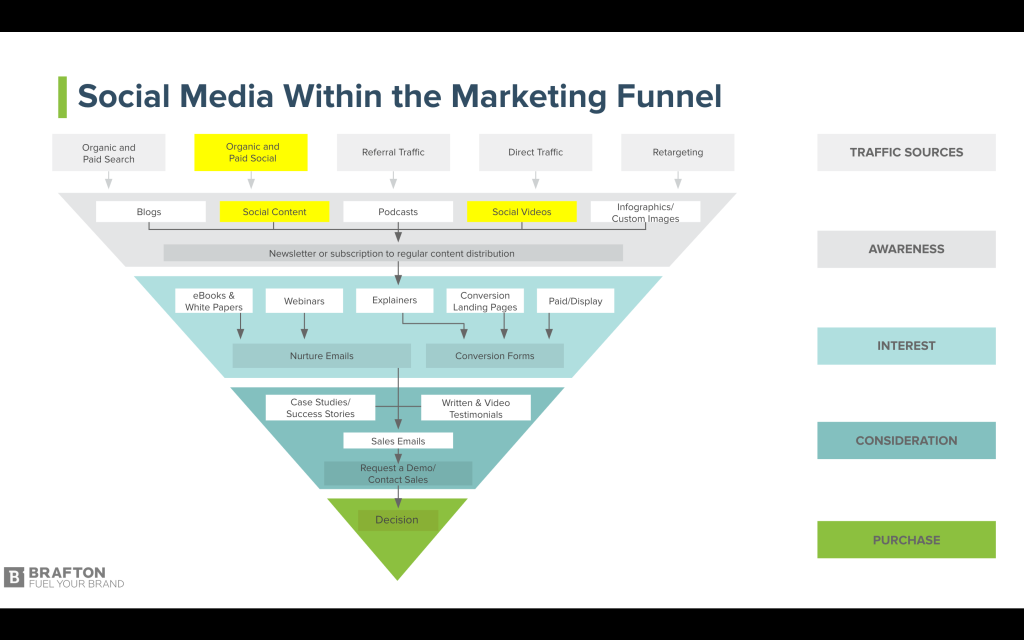
There are 4 core ways that social media drives consumers down the marketing funnel:

Brand Awareness
Social media spreads your brand’s message, values and mission to more potential customers and positions it as a valuable resource for target audiences.

Engagement
Through immersive, exciting and consistent content, social media allows brands to foster relationships with prospective customers and nurture long-term relationships with existing ones.

Website Traffic
Social media posts and paid ads can encourage followers to visit specific landing or product pages — resulting in more qualified website traffic.

Conversions
Through paid social media campaigns, brands can target specific groups of consumers to drive more conversions.
Setting SMART Social Media Goals
As powerful a tool for achieving business goals as social media is, you won’t see those results without a dedicated plan. That’s where SMART goal planning comes in. A SMART goal is one that’s:
- Specific.
- Measurable.
- Achievable.
- Relevant.
- Timely.
Using this framework helps marketers outline clear objectives that they can:
- Define and explain to their team or boss.
- Measure to determine whether and when it’s working as expected.
- Realistically accomplish with their time and resources.
- Tie to meaningful business goals or values.
- Create a detailed project plan for.
Without these elements, it’s all too easy to start chasing vague notions of success without really understanding if you’re getting the most value from your efforts that you can be.
Here’s an example of a SMART social media goal:
Increase blog traffic 10% within 6 months using LinkedIn posts.
This is a goal that’s easy to understand and can be communicated to all stakeholders working on LinkedIn or blog projects. It’s measurable (either blog traffic increases 10%, or it doesn’t), relevant to the brand (what brand doesn’t want more traffic to their blog?) and it’s timely (it has a deadline).
When setting your SMART social media goals, ask yourself:
- Is this goal easy to understand for other stakeholders?
- How will you determine whether you’ve achieved this goal?
- Do you have the required time, resources, tools and skills to achieve this goal?
- Does this goal support other business objectives or relate to a defined business value?
- When will you review the results to determine if this strategy worked?
So, you know how to set a goal. But what types of goals should social media marketers aim for?
Data from the Harris Poll on behalf of Sprout Social reported the impact social media has on helping organizations achieve each of these 4 marketing goals:

Brand Awareness
Over half — 55% — of all consumers discover new brands via social media. Specifically, 78% of Gen Z and 61% of Millennials utilize social media for brand discovery.

Engagement
A whopping 68% of consumers agree that social media provides an opportunity to interact and connect with businesses more than traditional advertising methods like billboards and TV commercials.
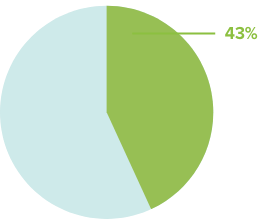
Website Traffic
Per the report, 43% of consumers have increased their social media use to discover new products and services.

Conversions
As many as 78% of consumers claim they’ll be more willing to purchase from a company after having a positive experience with the brand on social media.
With these statistics in mind, an increasing number of business leaders are prioritizing social media marketing strategies.
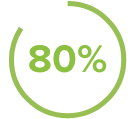
of business executives think it’s very important or essential to invest additional resources in social media marketing.
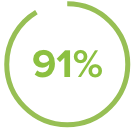
of executives will increase their social media marketing budgets in the next 3 years.
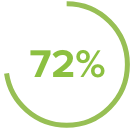
of companies use social media data to execute more informed business decisions.
Deep Dive:

What Is a Social Media Strategist, and What Role Do They Play in Your Marketing? (Infographic)
Take a walk in a social media strategist’s shoes to find out what this role entails and why it’s key for marketing, advertising and branding!

How To Get Into Social Media Marketing: Your Golden Ticket
Discover how to break into social media marketing with actionable tips and best practices for success.

14 Tips for Generating Results as a Social Media Content Creator (Infographic)
So you’re a social media content creator. Here’s how to turn “posting with a purpose” into a results-driven digital marketing strategy to grow your business.
Part 3
How Social Media Influences the Buyer Journey
Social Media Supports the Full Sales Funnel
The buyer’s journey describes a prospect’s path from awareness to purchase — and it can be broken down into 3 stages:

Awareness:
The potential customer has an interest in a product or service. This interest can stem from a need — such as solving a problem — or from external influences such as advertising, influencers or friends.

Consideration:
The buyer performs research to learn more about their options.

Decision:
The buyer determines which product or service best suits their needs.
So, what’s the connection between social media and the buyer’s journey? Social media marketing allows brands to reach consumers at all 3 stages of their journey.
During the awareness stage, businesses use social media platforms to reach a large number of people, thus increasing the likelihood of capturing the attention of potential customers through exposure. They can then continue to connect and engage with active users throughout the consideration stage by providing consistent, strategic and helpful messaging. As users enter the decision stage, brands can use paid social media ads — such as retargeting — to further influence their decision-making process and encourage more conversions.
The bottom line: Social media provides opportunities — or touch points — that help brands nurture a sale. Marketing strategist and TEDx speaker Yasmine Khater notes that various research suggests customers need anywhere from 3 to 12 touch points before committing to a sale, while the Rule of Seven states that it takes at least 7 touch points for a brand to enter a buyer’s consciousness.
Determining the right number of touch points can depend on various factors, including:
- Brand credibility.
- Price.
- Market competition.
- Complexity of the offering.
- How qualified the lead is.
- Whether the customer is buying based on a want versus a need.
No matter how many touch points consumers need throughout the buying process, a social media marketing plan facilitates easy creation and sharing of content across each stage.
Deep Dive:

How To Ace Your B2B Marketing Using Social Media
Social media is a game-changer for your marketing strategy, but you must use it right. Here’s how.

Content Strategy for Instagram in 2025: Master Your Reel With These Key Points
Develop an effective content strategy for Instagram using these nine steps.

5 of the Best Types of LinkedIn Content to Post (Infographic)
View the infographic to learn about 5 types of content that will attract high-quality leads and help you build a strong brand presence on LinkedIn.
Pros & Cons of Social Media Marketing
| Pros | Cons |
| Cost-effective. | Time-intensive. |
| Direct audience engagement. | Algorithm dependency. |
| Humanizes your brand. | Competitive. |
| Supports other channels. | Potential for public negative feedback. |
| Potential for high brand visibility and virality. |
Part 4
How to Make the Most of Your Social Media Strategy
8 Steps for Creating a Social Media Strategy That Works
A successful social media campaign requires that you analyze the various factors at play and come up with a plan of action to account for them. However, there are some essentials that should form part of any strong strategy:
1. Identify a Target Audience
Are you speaking to other businesses (B2B), or is your social media content directed at consumers (B2C)? Determining your audience can help you select the type of social media platform your brand should be on. It can also help you define the tone, imagery and frequency of which you post social media content.
To help you focus your social media efforts, ask yourself these questions:
- Is your focus B2B or B2C?
- What is the target age range?
- Where is your target located?
- Is there a certain income level that needs to be considered?
- What is your audience interested in? How do they spend their time?
2. Define Clear Goals
While businesses may share similar overarching social media goals — such as growing brand awareness or increasing follower counts — it’s important to determine clear goals that are specific to your business and the social media platform you’re utilizing.
3. Boost Posts to Extend Your Reach
Allocate a portion of your social media marketing budget to boosting posts on Facebook, Instagram and LinkedIn. Your budget can range from $25 to $100 per post, and we recommend boosting at least once a week to see results. However, the more posts you’re able to promote, the faster you can grow your social media presence.
4. Integrate Social Campaigns Under a Cohesive Strategy
Do your best to avoid one-off campaigns and instead focus on nurturing your audience and growing your following over time. Rather than taking a siloed approach, a winning social media strategy keeps the target audience and user intent at the core of every campaign.
5. Cater Content to Specific Platforms
Every social media platform you utilize is unique and should be treated as such. Therefore, when building out a social advertising strategy, consider the type of content — such as text vs. video vs. images — that’ll perform the best for each specific social site as well as the demographics using that particular platform.
6. Research Before Trying Something New
Social media marketers need to stay in the know regarding new tools on existing social platforms. But before testing out the latest filter or feature, ensure you fully understand its impact. Also, be wary of getting swept into a new trend just because it’s available. Make sure whatever new feature you’re trying out aligns with what your target audience wants to see and will help you achieve your marketing goals.
7. Tap Into the Power of Influencers and Creators
Word-of-mouth advertising still reigns as one of the most effective forms of marketing, and Semrush reports that 88% of people maintain a higher level of trust in a brand when a friend or family member recommends it. If you can get people talking about or recommending your brand on social media, you’ll not only build brand awareness but also enhance credibility — setting your brand up for more sales and better growth.
How do you do this? Many brands partner with influencers. These are industry leaders, public figures or social media accounts with large followings that can help foster trust in your products or services. According to Civic Science, 15% of those social media users between 18 and 24 purchased something because an influencer recommended it in the last 6 months.
Alternatively, if you have a smaller budget, a great option is to partner with micro-influencers and smaller creators, who have smaller followings but often a more engaged audience. This is especially true on TikTok, where content is characterized as more authentic and relatable than what you might see on other platforms.
8. Be Agile
As the social media landscape continues to evolve, you should stay abreast of these changes and adjust your strategy accordingly. Brands that are agile enough to re-evaluate their approach in a rapidly fluctuating landscape can leverage new opportunities, connect with consumers, maintain robust followings and outperform competitors.
Be willing to experiment and try new things, but don’t be afraid to take a step back if something isn’t working. And no matter what you do, keep in mind that it’s all about authenticity — if your brand feels genuine and honest, people will notice.
Deep Dive:

Measuring Social Media Marketing Success the Right Way
There are many platforms and metrics for measuring social media success. Find out the essential ones here.

How to Create an Instagram Content Calendar for Your Business (Downloadable Template)
Check out some of our favorite business Instagram content calendar examples. Then download our free template so you can create your own.

Social Media Handles: The Complete Guide (Infographic)
Discover how to choose the perfect social media handles to boost your brand and ensure platform consistency.
Part 5
Increasing Engagement and Growing Your Social Media Followers
Make an Impression on Your Audience
More than 70% of businesses use social media for customer engagement. So if you want to cut through the noise and connect with audiences on social platforms, you need to evoke emotion through compelling content. To achieve this, you’ll want to implement the following tactics into your social media strategy:
Utilize Impactful Imagery and Videos
Whether branded or user-generated, eye-catching imagery is a must when it comes to social media marketing. According to research from Buzzsumo, adding images to Facebook posts can lead to 2.3 times more engagement, increase X retweets by 150% and double LinkedIn engagement.
Social media posts containing videos see similar increases in engagement. Research from SocialMediaToday shows that:
- 78% of people watch videos online every week.
- 72% of customers prefer to learn about a product or service by watching a video.
- Tweets with videos receive 10 times more engagement than those without.
- People on LinkedIn are 20 times more likely to share videos compared to other posts.
- Video content generates more engagement than any other posts on Instagram.
- After viewing a brand video, Pinterest users are 2.6 times more likely to make a purchase.
While video presents a great deal of opportunity for marketers, a standalone video isn’t enough to drive responses. To achieve the desired outcome, marketers need to implement best video practices — such as making sure the video is optimized for sharing and engagement, creating a captivating story that conveys your brand’s personality, providing a call to action, making sure the videos can adapt to mobile, keeping them at an appropriate length and more.
Be Socially Active
Make sure your team is actively engaging with audiences on the platforms. You can do this by responding to mentions, direct messages and comments in a timely, personable manner — that means no canned responses. Monitoring social media accounts and responding to engagement is a full-time job, which is why many brands designate social media managers or hire third-party agencies to oversee engagement.
Create Fresh Content With Relevant Hashtags
When building out a social media plan, prioritize quality over quantity. With so much content out there, it’s essential to consistently create fresh, interesting and impactful posts that resonate with target audiences and align with your business goals.
Producing a steady stream of high-quality, timely content ensures your brand is seen as a thought leader, industry expert and trusted advisor. And when you create fresh content, make sure to add relevant hashtags to to boost your chances of increasing your follower count and influence.
Push for More Followers
Organically gaining followers can be a long process, but implementing a follower push can quickly increase your social media reach. This process differs based on the social media platform you’re using:

Invite users who have reacted to your post to follow your page or boost posts to enhance engagement. Additionally, create Facebook groups and events that you can invite users to attend. This will give you opportunities to interact with potential followers and increase your chances of getting them to follow your page.

Search competitor followers, industry-related hashtags or specific locations to find your ideal user base. Follow those accounts with the intention that some will follow you back. You can also comment on posts within your niche to initiate conversations and create the appearance of authority.

Try inviting 1st-degree connections or industry leaders to follow your page. Take advantage of hashtags and interact with people in your niche via comments and reposts.

X
Seek out industry thought leaders and competitors, browse their follower lists and follow key accounts — which should result in many of them following you back. Continue following and engaging with people within your niche, and you’ll soon see a steady stream of new followers.
Paid Social Advertising & Sponsored Content
Paid social advertising refers to sponsored content placed on platforms like Facebook, Instagram, LinkedIn, TikTok and more. These ads can appear in various places depending on the platform, including right in users’ feeds, in stories or on sidebars. They’re designed to promote content, drive traffic, boost engagement or generate leads beyond the reach of organic posts. Paid social advertising includes:
- Sponsored posts and videos.
- Carousel ads and story formats.
- Lead gen and follower acquisition campaigns.
Why It Matters
Organic content builds community and brand trust over time, but algorithms limit its visibility. Paid social acts as a strategic amplifier, helping brands:
- Reach new audiences beyond their followers.
- Grow faster with targeted follower and awareness campaigns.
- Boost post visibility and engagement with promoted content.
- Drive conversions with precise audience targeting and CTAs.
Paid Social Examples
- Run LinkedIn or Facebook follower campaigns to grow your audience quickly.
- Launch video ads to build brand awareness and share key messages.
- Boost posts on Instagram, Facebook or LinkedIn to drive traffic and engagement.
Sponsored Content vs. Display Ads
Sponsored content blends seamlessly into user feeds, appearing more authentic than traditional ads. This native feel makes it ideal for brand awareness and mid-funnel engagement.
How Paid Social Fits Into Your Strategy
Paid social complements organic content by expanding reach, speeding up results and providing measurable ROI. Use it to:
- Amplify high-performing posts.
- Test creative variations.
- Retarget warm audiences.
Together, organic + paid social create a balanced strategy that simultaneously builds trust and drives results.
Deep Dive:

LinkedIn Optimization for Executives: A Comprehensive Guide for Leveraging LinkedIn To Achieve Your Goals
LinkedIn optimization for executives is about demonstrating thought leadership, sharing expertise and building a community. Here’s how to get started.

Boost Your Content Strategy With These 20 Free Social Listening Tools
Ever wonder what people are saying about your brand? Here are 14 free social listening tools you can try.

Our Advice for Marketers Thinking of Joining Meta’s Threads
Discover the nuances of Meta’s Threads, the mobile-first platform challenging Twitter. Explore demographics, potential and challenges for marketers
Part 6
Top Social Media Platforms
Build Your Brand’s Presence on the Platforms Your Audience Prefers
In today’s digital-first world, it comes as no surprise that 7-in-10 Americans use at least one social media account. But the question marketers need to focus on is which one — or ones — their target audience is using.
Here’s an overview of the most prominent social media platforms and the demographics who actively use them:
There’s strength in numbers, so Facebook’s — which is now a part of Mark Zuckerberg’s Meta — massive user base makes it one of the most noteworthy digital social media marketing platforms. Moreover, Hootsuite’s report reveals there are 2.91 billion monthly active users on the platform — a 6.2% increase from 2021 — making Facebook the 7th most valuable brand in the world.
With such a robust user base, Facebook can reach a range of demographics, specifically college-educated internet users, women, people between 25 and 34, and people earning over $75,000 per year, according to Sprout Social.
As far as what people are doing on the social platform, Facebook has some interesting data:
- 65% of Facebook users rely on the platform to view photos.
- 57% of users leverage the platform to share content.
- 46% use Facebook to find and watch videos.
- 36% get their news from Facebook.
- 66% of users visit a local Facebook business page at least once a week.
As you can tell, there are many reasons why people use Facebook, and the platform is a valuable tool to reach these users. The more you know about your target audience, the better able you are to tailor your marketing campaign for them.
Instagram is more than a hotspot for influencers — it’s a thriving social media platform with more than 1 billion monthly active users and over 500 million daily active users, according to Hootsuite.
Breaking these users down based on age, the largest group is between 25 and 34 (31%), followed closely by 18-24-year-olds (30.1%) and 34-44-year-olds (16.1%).
These figures mean that the majority of Instagram users are Millennials and Gen Z, making the platform a powerful marketing tool for brands that target these demographics.
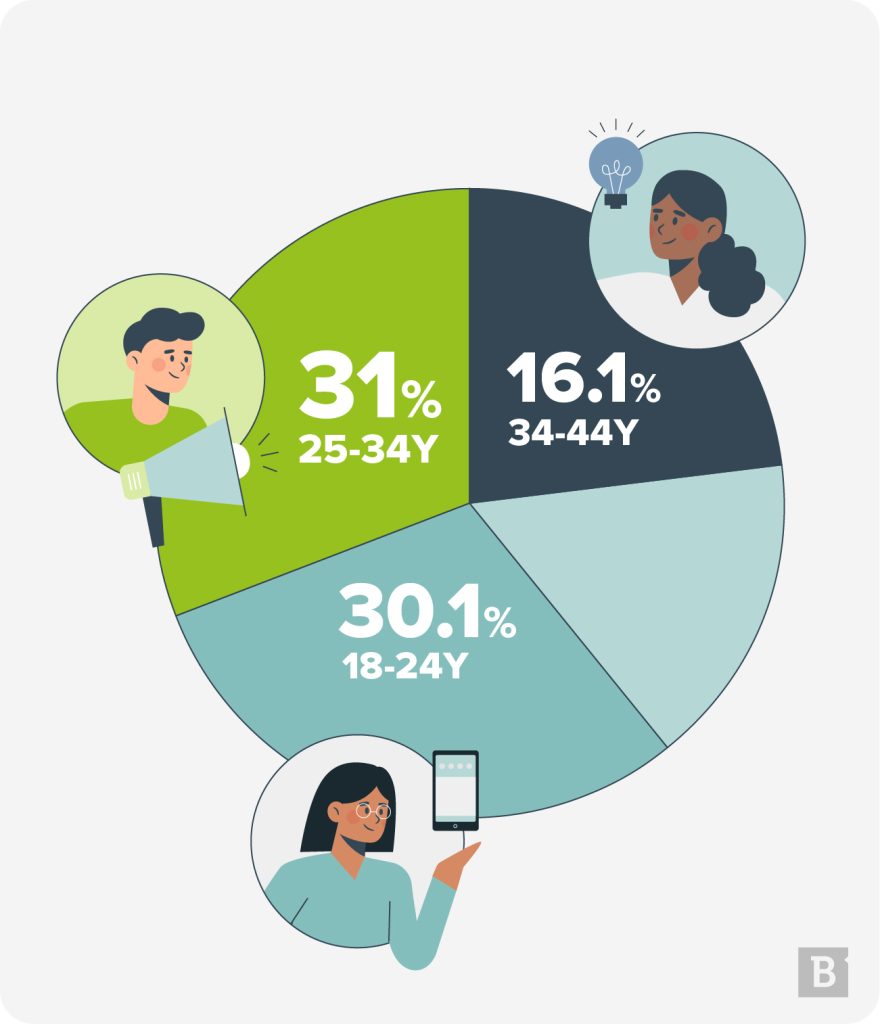
Breaking users out even further, Sprout Social’s Instagram demographics report shows that 48.4% of users are female, 51.8% are male, and the average person spends 29 minutes per day on the app. Additionally, Forrester found that engagement rates on Instagram are 10 times higher than on Facebook, 54 times higher than on Pinterest and 84 times higher than on X.
While Facebook and Instagram are many brands’ go-to platforms for social media marketing, it’s important not to overlook X. According to Hootsuite, X is the 9th most visited website in the world, and Pew Research Center found that 7 out of 10 X users utilize the platform to receive news.
In addition to gaining insights into current events, users also leverage X to communicate with brands. According to BrandWatch, 80% of X users have mentioned a brand in a tweet and the number of customer service conversations occurring via X has more than doubled in the last 2 years.
LinkedIn is home to the world’s largest professional network, with Sprout Social reporting the platform maintains 810 million monthly active users.
Traditionally, the social media channel has been used by older audiences. But Millennials are now the most active age demographic on LinkedIn. According to Hootsuite, 57% of LinkedIn users are men, and 43% are women. LinkedIn also reports that 4 out of 5 LinkedIn members drive business decisions, with 10.7 million users being opinion leaders and decision-makers within their industry.
From a marketing perspective, having a prominent social media presence on LinkedIn can help brands build relationships with influential leaders within their target market.
Pinterest is a critical social media platform for brands catering to women, as Hootsuite reports that as of January 2022, 76.7% of Pinterest users were female. The largest age bracket represented on the platform is women between 25 and 34, and 41% of all users have household incomes over $75,000.
Another important metric for marketers to consider when it comes to Pinterest: SocialMediaToday reports these users have the highest purchase intent of any social media network. Approximately 85% of women use Pinterest to plan life moments like weddings, graduations and baby showers. So by being active on Pinterest and using the platform to showcase products, brands can connect with female shoppers and drive more purchases.
Since launching in 2017, TikTok has seen a rapid increase in users — so much that Insider Intelligence named it the world’s third-largest social network. According to Hootsuite’s statistics, TikTok was the most downloaded app of 2021, has over 1 billion monthly active users and is more popular than Instagram among the Gen Z demographic. A key reason for TikTok’s success is due to its advanced algorithm matching, which recommends videos for each user and has been noted to be superior to other social media algorithms.
As TikTok rises in popularity, more brands are considering getting involved on the platform. However, it’s critical to note that not all brands may belong on TikTok. To thrive on the platform, brands need to dedicate time and effort to create original, engaging content that resonates with those audiences using the app — namely Generation Z and Millennials.
Reddit is not a new platform, but its rise as a noteworthy marketing channel is a trend that began just a few years ago. Reddit posts increasingly feature in Google SERPs, and forums are a popular place for AI crawlers to find information. Therefore, modern marketers have recently begun to consider how they might leverage this platform for their benefit. While tailoring a paid or organic strategy toward Redditors — the platform’s active userbase, which is growing quarter by quarter — can be a tricky exercise in balanced communication, it can be worthwhile when done right.
Deep Dive:

A Beginners Guide To Using Reddit: Marketing Edition
Reddit wasn’t dubbed the front page of the internet for no reason. Learn what it takes to do well on Reddit and how to push your posts to the top.

How to live tweet an event (Everything you need to know)
How does live tweeting attract attention to your business, what types of events are best for this social media strategy and what best practices should you follow? Let this blog post be your guide.

How To Get Followers on Facebook
Boost your Facebook follower count in 2025 with this practical guide packed with proven growth tactics.
Part 7
Emerging Social Media Platforms Marketers Should Know
Explore These Niche Platforms to Find Unique Opportunities
Social media is ever-evolving, so marketers need to keep an eye on up-and-coming platforms and decide if they should be building a presence on them. A few noteworthy emerging social media platforms include:
Discord launched as a gaming platform in 2015 and has since evolved into an expansive chat app, with Earth Web reporting over 150 million monthly active users. With the average user spending 280.6 minutes on the platform a month, certain brands can benefit from having a presence on Discord. However, all efforts must be 100% organic as Discord currently does not offer paid advertising options.
According to Earth Web, Twitch — a live streaming platform that launched in 2011 — currently has 15 million daily active users, many of whom are video game enthusiasts. Currently, Twitch reports that it maintains a younger audience, with 70% of its viewers being between the ages of 16 and 34.
However, other niches have been gaining traction on the platform — such as beauty, chess and cooking content — causing the app to diversify its audience and giving marketers new opportunities to reach audiences. With that in mind, HubSpot reports that 75% of B2B social media marketers plan to increase their investment in Twitch.
Since 2011, Snapchat has been providing a unique, personalized way for brands to share exclusive, behind-the-scenes content and connect with audiences. his has proven to be successful, and although other platforms are on the rise, 363 million active users use the platform daily. Likewise, this app hosts a younger audience, with 90% of the 13 to 24 year-old population as users.
As Mark Zuckerberg launches Meta — formerly Facebook — the company will aim to create a collective project that connects people throughout the world and leverages virtual and augmented reality technologies to create immersive 3-D spaces.
For marketers, the new social media platform has the potential to unlock exciting opportunities for building brand loyalty. Some major corporations are already showing their commitment to the Metaverse — such as Nike, Adidas and Ralph Lauren — by creating digital fashion collections specifically for platform users.
Substack
Substack started in 2017 as a blogging platform that supported email newsletters, making this medium the perfect solution for individuals who wanted a way to keep their followers in the loop. Even more impactful, Substack makes it easy for content creators to monetize their content, stay connected with their audience and analyze readership statistics through a built-in dashboard. People have come to view Substack as a place not just for good content, but top-quality thought leadership — the perfect place for brands or company influencers to share their insights.
Deep Dive:

Say Hello to Substack: A Platform Primer for Content Marketers (Infographic)
Whether you’re a seasoned marketer or just starting out, understanding Substack can unlock new possibilities for your brand’s content strategy. In this comprehensive guide, we’ll delve into what Substack is and how it differs from traditional blogs.

4 Guerilla Marketing Ideas To Capture Audience Attention
Use these guerilla marketing ideas to inspire your next go-getting, attention-grabbing campaign.

How To Create the Perfect Social Media Budget for Your Business
Social media marketing is at its best when your organization sets a budget for your efforts — here’s why and how to make it work.
Part 8
Social Media Marketing Trends
Tap Into Trending Topics
There are important trends social media marketers should be aware of as they develop, execute and refine their social strategies:
The Increasing Importance of Video
As TikTok’s success continues to grow, the importance of video content will only increase, and it’s quickly becoming a crucial part of successful social media marketing strategies.
And as more brands join the TikTok community, new trends, hashtags and subcultures — like #HRTok, #CleanTok and #FinanceTok — will continue to emerge to make it easier for users to find specific types of content across different niches.
To keep up with user demands, other platforms are following suit and enhancing their own video offerings. One of these cases is Instagram Reels, which was a direct response to TikTok’s popularity. Reels offer similar video creation functionality as TikTok — from sharing new product releases to presenting how-to guides — and will continue to compete with TikTok to become the platform of choice among users.
The Emergence of Social Media Audio Features
In addition to an increasing emphasis on social media video content, audio apps are also growing in popularity. Examples include:
Twitter Spaces
As of May 3rd, 2021, anyone with a X account with more than 600 followers can host a live space.
Clubhouse
This social audio app launched in March 2020 — right at the start of the COVID-19 pandemic — to provide rooms for users to listen and join in exciting conversations. Fast-forward to today, and Clubhouse has over 10 million users.
Facebook Live Audio Rooms
In June 2021, Facebook announced that U.S.-based public figures and prominent groups can launch live audio rooms through its app.
More UGC
According to Nosto, consumers find user-generated content (UGC) 9.8 times more impactful than influencer content. Further, PR Newswire reports that an estimated 90% of consumers find UGC has a more significant influence over their buying decisions than tactics like promotional emails.
The takeaway: UGC is powerful, and businesses that don’t have a UGC strategy in place will be left behind as consumers continue to turn to each other for advice and recommendations.
Building Brand Trust
Social media sites now play an important role in our daily lives, with 91% of people believing that social media is a great way to stay connected and 64% of consumers like when brands interact with them.
With the growing number of businesses competing for attention on social media, brands must focus more strongly on establishing meaningful relationships with consumers by acting as connectors instead of merely trying to sell products.
Providing Customer Care
As we navigate a post-pandemic world, providing customer care via social media is becoming more critical for reputation management and customer satisfaction. Brands have the power to leverage social media listening tactics so they can join conversations, diffuse concerns and provide prompt responses to customer concerns.
Deep Dive:

Mastering Organic Social Media Post Writing: Best Practices and Strategies
Crafting this content requires a blend of creativity, strategy and an understanding of what resonates with your audience.

How to crush content creation on social media
When it works, social media marketing can feel like magic. Let’s look at some proven ways to create memorable content your followers will love and share.

61% of B2B Marketers Are Using TikTok: Survey Results (Infographic)
We asked 100 B2B marketers about their TikTok use (or lack thereof) to discover if it’s the right move for advertising professionals. Here’s what they said.
Part 9
Social Media Marketing Challenges:
Tips for Overcoming Common Obstacles on Social Media
In addition to trends, there are also obstacles marketers may face when implementing a social media strategy:
Prioritizing Corporate Social Responsibility
Yes, brands should be using social media to promote themselves. But they also should be using the platforms to highlight their commitment to corporate social responsibility (CSR), such as discussing environmental or social justice issues.
Customers care about a brand’s stance on social matters, and 84% of global consumers consider sustainability important when choosing a brand. Therefore, incorporating CSR into social media strategies can enable brands to build better relationships with audiences and turn them into committed brand ambassadors.
Creating Authentic Communities
Social media is shifting from mega-influencers to tight-knit, authentic communities where consumers can feel heard. Thus, brands must partner not necessarily with influencers with the largest following, but with creators who can help them connect with niche audiences, earn their trust and gain more cultural capital.
Boosting Creativity in Paid Ads
Social advertising is nothing new, and users know the difference between paid advertisements and organic posts. In order to remain relevant, brands must think outside the box and take a more creative approach to paid advertising that will not only resonate with consumers but also enrich the experience that the specific social media platform they’re advertising on offers.
Deep Dive:

Best Practices for Community Management on Social Media: Expert Guide
Do you know the best ways to practice community management on social media? Read our guide for tips on managing your social channels effectively.

What’s the Importance of a Social Media Moderator?
Learn why it’s important to have a social media moderator on your brand’s team and find out what makes these professionals excel.

Top 3 Pros and Cons of Social Media for Your Brand
Social media is an essential part of marketing strategy nowadays. But there’s an upside and downside, so follow these tips carefully.
Launch a New Social Media Strategy Today
With a strategic social media strategy, your brand can reach new audiences, increase loyalty among existing customers and accelerate its growth. Whether you’re building an entirely new social media presence or looking to overhaul existing social media marketing campaigns, you’ll want to have a team of knowledgeable social media experts in your corner. Brafton’s well-versed social media marketers, content writers and graphic designers are ready to help you develop, design and execute a results-driven social media strategy that achieves your key marketing objectives.







